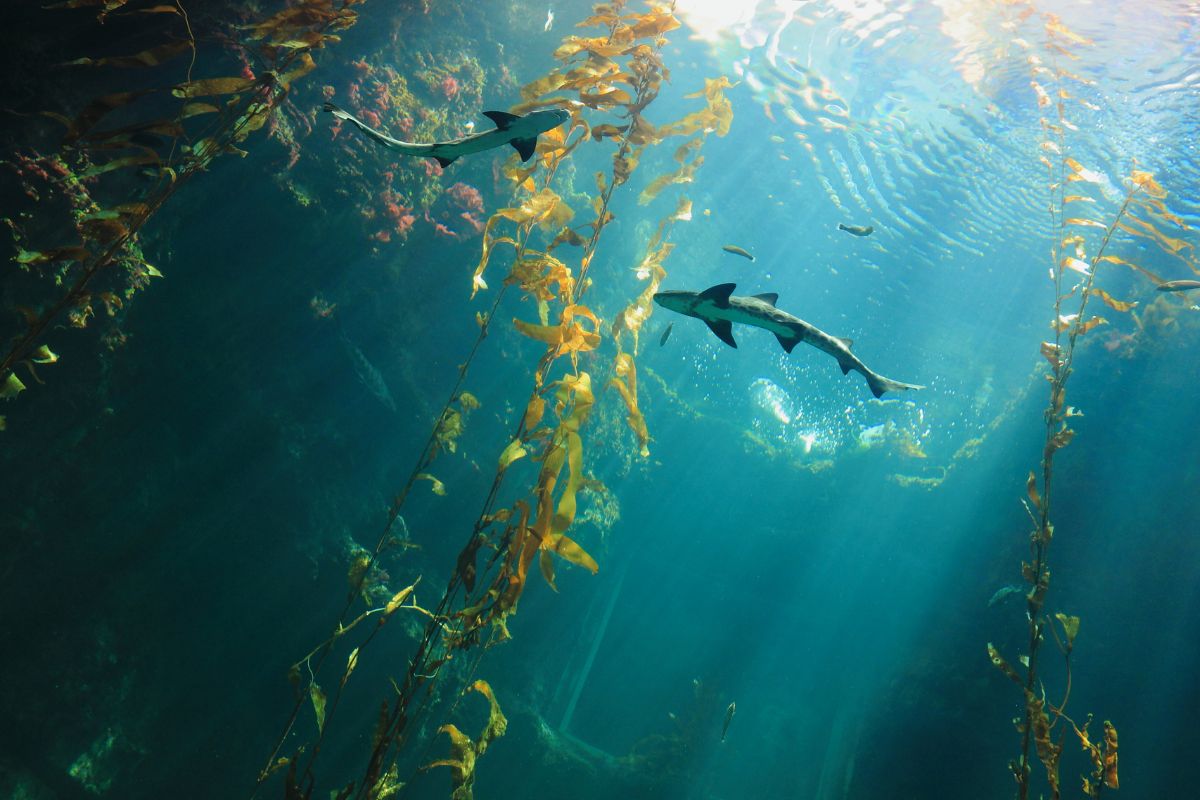Sharks are far from being small fish, in fact they are known as some of the most ferocious underwater predators specifically because of their size allowing them to easily encircle and tower over most other fish and marine animals.

This reputation is not a lie either, sharks such as the whale shark are some of the largest species of fish and can be as big as 60 feet in some cases.
While the majority of shark variants are much larger to suit their habitat and diet, there are a few interesting types of shark that are much smaller, with some being so small that they are nearly impossible to spot.
Below we have taken a deep look into the smallest types of sharks, their characteristics and if they even class as predators the same as most shark species.
What Are The Smallest Sharks?
The lantern shark is the smallest species of shark that has been found.
There are a few types of lantern sharks including the dwarf, velvet belly, Caribbean and broadband lantern sharks, before looking at them individually however there are some similarities they all share.
This is specifically the case with their diet as all lantern sharks are known to feed on cartilaginous fish as well as worms, squid and shrimp.
The younger sharks will feed primarily on krill and more bony fish before they mature and start feeding on the regular diet.
It is also uncertain how exactly lantern sharks reproduce as they are so hard to find and analyze.
It is most likely that they reproduce ovoviviparous which is reproducing by the means of the eggs hatching within the body of the parent.
This type of reproduction is most common among reptiles but is also shared by most shark species.
Smooth Lantern Shark
The smooth title given to these lantern sharks come from their denticles which are well separated giving them a very smooth body.
When they are born, they are just over 5 inches long and can grow to a maximum of 19 inches as they grow older.
These are actually the longest of the lantern sharks and they are more widely distributed, commonly appearing in the Atlantic and Pacific Oceans.
Along with most other variants of lantern sharks, they will often inhabit deep and cold water as their preferred habitat.
Velvet Belly Lantern Shark
Named after their black underbelly that contrasts with their brown body, velvet belly lantern sharks are known to grow as large as 17 inches, being just a bit smaller than the smooth lantern shark.
They have a very stout body and also have a long tail with fairly small gills.
In terms of their diet, older velvet belly lantern sharks will feed on shrimp and squid however the younger fish will also feed primarily on krill and bony fish.
Velvet belly lantern sharks are estimated to mature from between five to six years and are primarily found in deep waters of the northeastern Atlantic Ocean near Iceland and Norway.
Caribbean Lantern Shark
This very varied lantern shark can be found from the Western to the Eastern Atlantic Oceans.
They are one of the smaller lantern sharks, being only 3 inches at birth and growing no bigger than 7 inches once they are fully matured.
The Caribbean lantern shark can live up to depth levels of 2,326 feet.
Broadband Lantern Shark
This lantern shark can be found in the West Atlantic from the USA to Argentina.
They can however also be found in the Western Indian Ocean and south Atlantic sea.
They are only a little bigger than the Caribbean lantern shark with mature males usually being measured at around 10 inches.
They have a blackish-brown body that transitions fully to black below. They are also recognizable for their broad, elongated black mark that runs above and behind the pelvic fins.
Similar to other types of lantern sharks, because they have not been well researched since they are so difficult to catch, their exact behavioral traits, biology and reproduction system is still unknown.
Dwarf Lantern Shark
Definitely the most popular lantern shark, the dwarf lantern shark is officially the smallest shark there is, only being able to reach a maximum size of 7 inches once they are fully matured.
Aside from their miniature sizes, dwarf lantern sharks are also known for their huge eyes along with having 25-25 rows of teeth in each jaw.
They are most commonly found off the coasts of Columbia and Venezuela and often reach depths of 1,440 feet.
Because of how small they are to even see, dwarf lantern sharks were actually not discovered until 1964.
Due to this they are the lantern shark that has received the least amount of research and still remain incredibly mysterious.
We do know however that these sharks glow because of their skin, and they use this glowing skin to both attract prey and to hide from predators.
They are not considered commercially important so they are very rarely caught by commercial fisheries.
They also feed primarily on crustaceans but are also capable of eating very small fish and squid.
Which Lantern Shark Is The Smallest?
The Dwarf lantern shark is the smallest lantern shark and the smallest shark overall growing only as big as 7 inches.
The caribbean lantern sharks are right behind them growing up to 8 inches with these two, along with broadband lantern sharks, being considered the smaller type of this species.
In contrast, the smooth and velvet belly lantern sharks are considered to be on the bigger side however they still will only grow as big as 19 inches, making them still quite small as far as aquatic creatures.
Summary
While our minds can immediately relate sharks to being larger animals that rule the seas with their intimidating and stocky frames, the lantern sharks are actually much smaller but still retain the general appearance of sharks and act in similar ways, with the dwarf lantern shark being the smallest shark species currently found.
- Is It Possible For A Shark To Swim Backwards? - August 2, 2024
- Are Leopard Sharks Dangerous? - August 2, 2024
- What Are The Differences Between Shark And Dolphin Fins? - August 1, 2024








